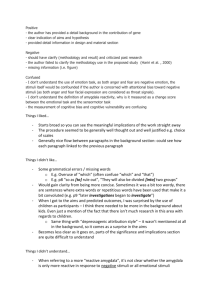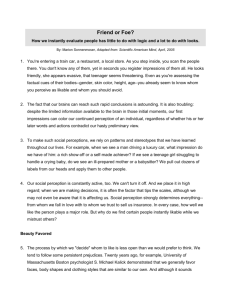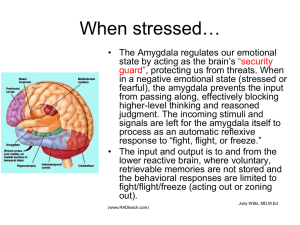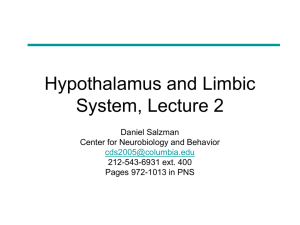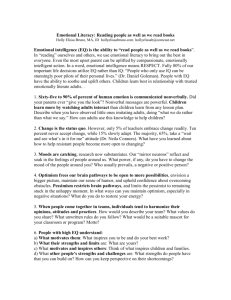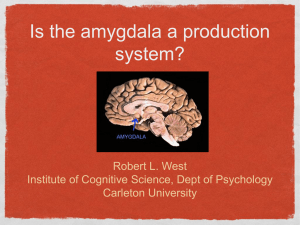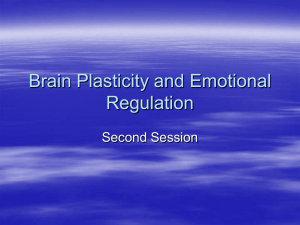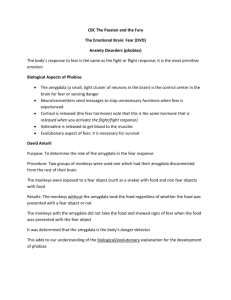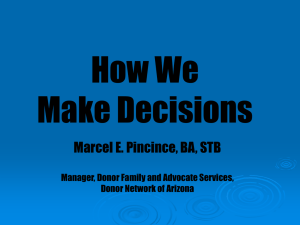Lecture 37 -- Emotion, Reward and the Limbic System -
advertisement
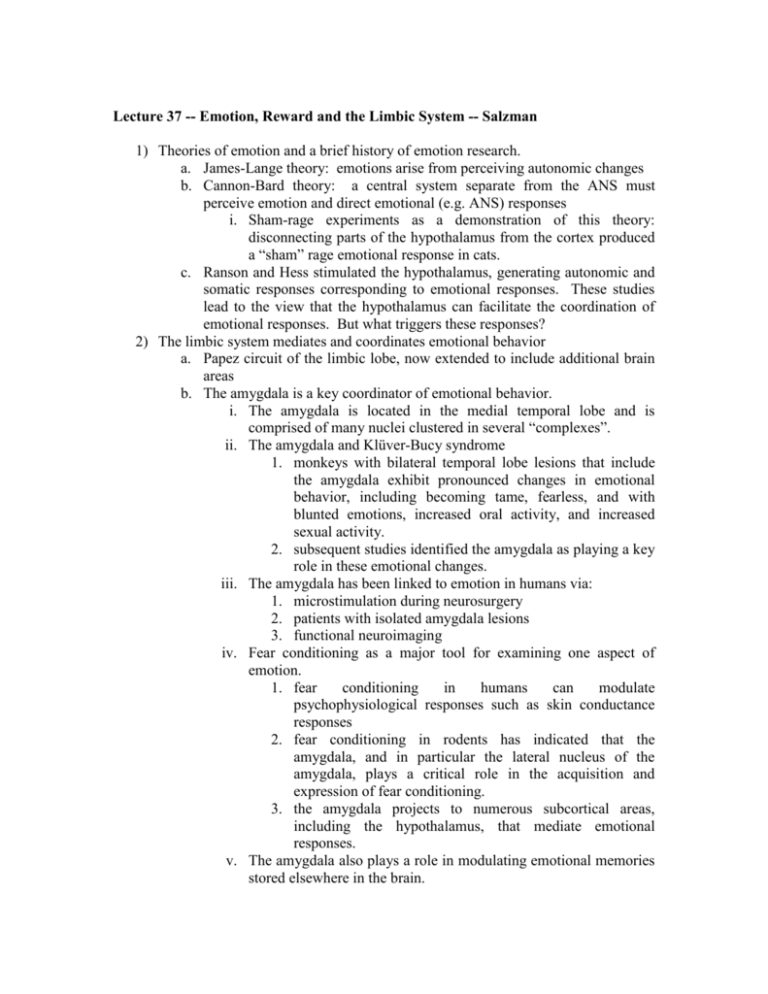
Lecture 37 -- Emotion, Reward and the Limbic System -- Salzman 1) Theories of emotion and a brief history of emotion research. a. James-Lange theory: emotions arise from perceiving autonomic changes b. Cannon-Bard theory: a central system separate from the ANS must perceive emotion and direct emotional (e.g. ANS) responses i. Sham-rage experiments as a demonstration of this theory: disconnecting parts of the hypothalamus from the cortex produced a “sham” rage emotional response in cats. c. Ranson and Hess stimulated the hypothalamus, generating autonomic and somatic responses corresponding to emotional responses. These studies lead to the view that the hypothalamus can facilitate the coordination of emotional responses. But what triggers these responses? 2) The limbic system mediates and coordinates emotional behavior a. Papez circuit of the limbic lobe, now extended to include additional brain areas b. The amygdala is a key coordinator of emotional behavior. i. The amygdala is located in the medial temporal lobe and is comprised of many nuclei clustered in several “complexes”. ii. The amygdala and Klüver-Bucy syndrome 1. monkeys with bilateral temporal lobe lesions that include the amygdala exhibit pronounced changes in emotional behavior, including becoming tame, fearless, and with blunted emotions, increased oral activity, and increased sexual activity. 2. subsequent studies identified the amygdala as playing a key role in these emotional changes. iii. The amygdala has been linked to emotion in humans via: 1. microstimulation during neurosurgery 2. patients with isolated amygdala lesions 3. functional neuroimaging iv. Fear conditioning as a major tool for examining one aspect of emotion. 1. fear conditioning in humans can modulate psychophysiological responses such as skin conductance responses 2. fear conditioning in rodents has indicated that the amygdala, and in particular the lateral nucleus of the amygdala, plays a critical role in the acquisition and expression of fear conditioning. 3. the amygdala projects to numerous subcortical areas, including the hypothalamus, that mediate emotional responses. v. The amygdala also plays a role in modulating emotional memories stored elsewhere in the brain. c. Emotional behavior and positive reward i. Electrical stimulation to certain brain areas can act as a powerful reinforcer. Rats will often choose self-stimulation over food and sex. ii. These self-stimulation studies have identified dopamine neurons in the ventral tegmental area (VTA) in the midbrain as being important for reward. These neurons form much of the mesolimbic and mesocortical projections involved in reward. iii. Neurophysiological recordings from VTA neurons indicate that these neurons appear to compute the difference between the reward received and the reward expected. This signal can function as a learning signal about reward that can be used by other brain areas to guide motivated behavior, because providing information about how a reward received differs from the reward predicted can help guide future behavior to acquire rewards. iv. Drugs of abuse increase dopamine release in the brain, and they appear to act on the same neural circuits that encode reward. Relevant reading: ch. 50 and ch. 51 (pp. 1007-1012)

